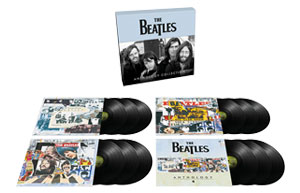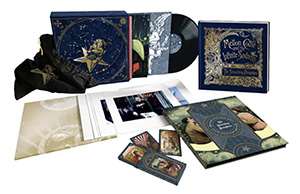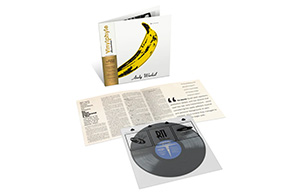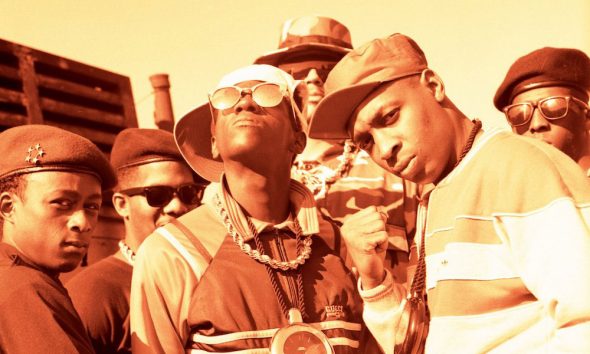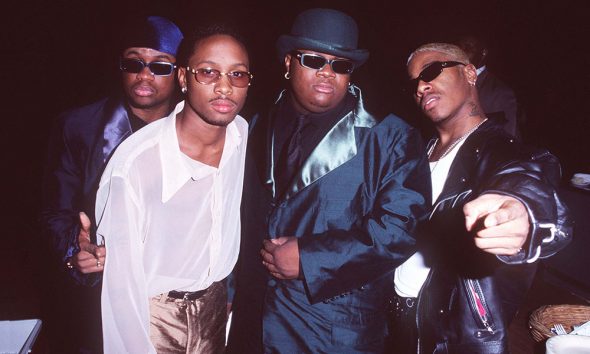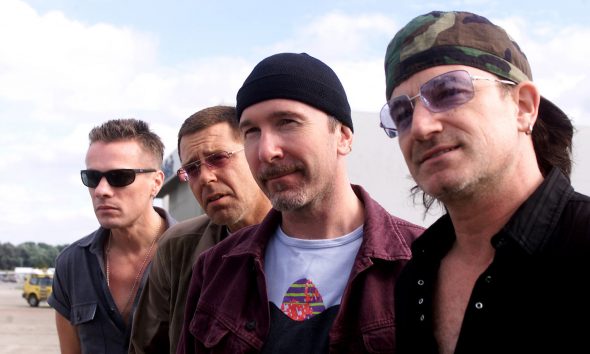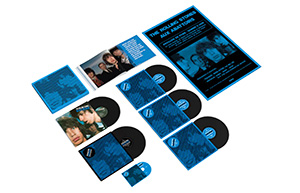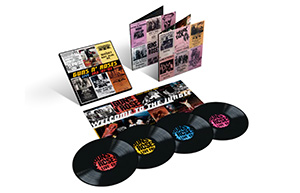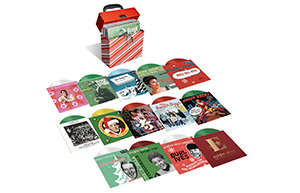‘Northern Lights – Southern Cross’: The Band’s Timeless Comeback
Even with change and challenge, the group produced an album that ranks alongside their very best.
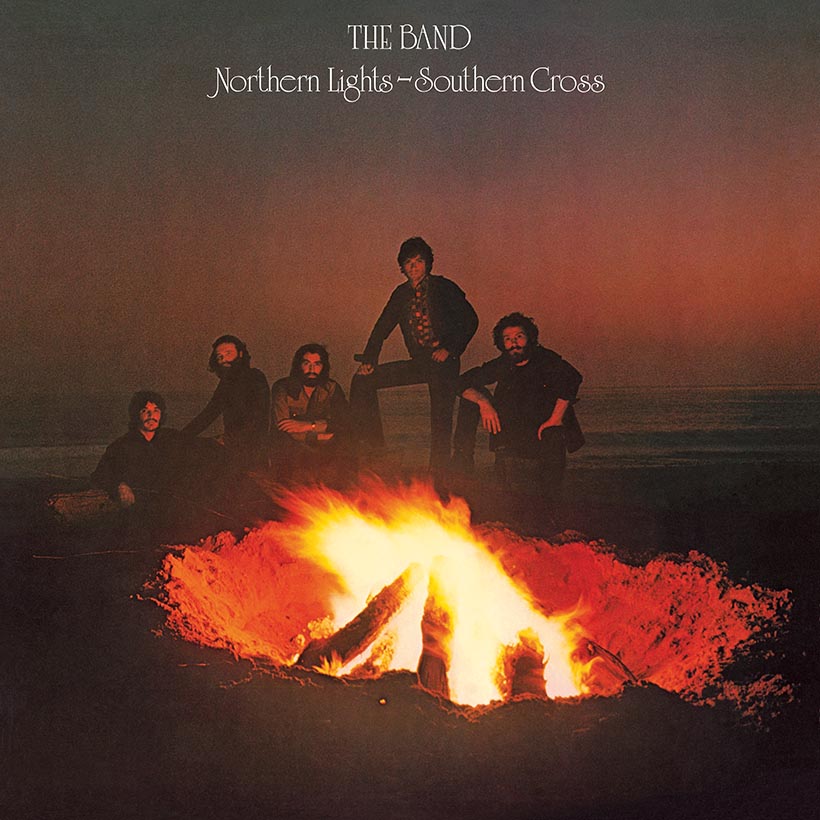
On its release in November 1975, Northern Lights – Southern Cross seemed like the beginning of a new phase in the incredible career of The Band. It was the first album to be recorded at Shangri-La, their state-of-the-art Malibu clubhouse/studio, and featured some of principal songwriter Robbie Robertson’s strongest material in years, extraordinary performances from the vocal dream team of Rick Danko, Levon Helm, and Richard Manuel, and a new level of virtuosity, innovation and studio craft from multi-instrumentalist Garth Hudson. The photograph chosen for the album’s front sleeve – taken by Reid Miles, the photographer and designer responsible for countless iconic covers for Blue Note Records – certainly suggested a sense of renewed unity, capturing The Band huddled around a fire they’d made on the beach behind Robertson’s house.
Despite all this, the making of Northern Lights – Southern Cross had been fraught. “I was in and out of [Malibu] for most of 1975, as we struggled to make our next album. Which took longer than any other we ever made because it became impossible to get everyone together at one time,” Helm wrote in his 1993 autobiography, This Wheel’s On Fire. The Band were drifting apart, thanks to a combination of individual projects, as well as disagreements over writing credits and band finances. “The writing was on the wall, Robertson told Uncut in 2016. “Things were drifting. It was becoming a little bit harder to coordinate what we needed to do, people came in late or wouldn’t show up, and it felt like the interest level in what we were doing was fading.”
The songwriting process
As he’d done on Stage Fright’s “The Rumor,” Robertson found inspiration in the personal struggles of his bandmates for Northern Lights – Southern Cross’ opening track “Forbidden Fruit.” In sharp contrast to the strutting funk-rock backing, Robertson’s lyrics offered a thinly-veiled word of warning about the dangers of heroin use (“Forbidden fruit, don’t you shoot the whole works away”) and hinting at the role substance abuse played in the breakdown of relationships in The Band (“How can you hear with a bad connection?/You can’t see when there’s no reception”). It’s no accident perhaps, that it was sung by Levon Helm.
But Helm wasn’t the only member of The Band to be given material to sing that reflected the hard-living of the previous few years. During the album sessions, pianist and singer Richard Manuel lived in a bungalow at Shangri-La which had a famous former tenant, as Helm remembered in This Wheel’s On Fire, “Down toward the beach there was a horse shed, which had been Mr Ed’s when TV’s talking horse had been a resident. We had Mr Ed’s stable concerted to a bungalow, and Richard moved in and basically stayed there for the next year, drinking seven or eight bottles of Grand Marnier orange brandy a day.”
Robertson wrote the soulful ballad “Hobo Jungle” specifically for Manuel, with a lyric that celebrates society’s outcasts – the “drifters and rounders” riding trains and sleeping underneath the stars. Though Robertson’s lyric can veer towards an overly romantic and surface-level understanding of people experiencing homelessness (“Though nobody here really knows where they’re goin’/At the same time, nobody’s lost”), Manuel’s tender vocals show a deep respect and empathy for those living on the margins of society.
Meanwhile, Robertson had only one singer in mind when he wrote the most heartbreaking song on Northern Lights – Southern Cross. “There was no question in my mind who was gonna sing ‘It Makes No Difference’,” Robertson told Rock Cellar in 2017. “I wrote it and I cast it perfectly for Rick Danko.” “It Makes No Difference” is a straightforward song from the perspective of a person left bereft after the disintegration of a relationship – typical tears-in-your-beer stuff – but Danko’s husky, emotionally exhausted performance is totally convincing, pushing the song towards greatness. The effect is heightened by an elegant Robertson guitar solo followed by a saxophone solo by Hudson which underlines the staggering extent of his musicality.
A new studio
Indeed, while Hudson was the unsung hero behind much of The Band’s music, Northern Lights – Southern Cross saw their “music teacher” come to the fore. Hudson’s mastery of the cutting-edge technology at Shangri-La gave Northern Lights – Southern Cross a sophistication and polish that was a world away from The Band’s earliest records. “Shangri-La had 24 tracks, and Garth used that leeway to craft as many as half a dozen keyboard tracks on a single song using the ARP, Roland, Mini Moog, and other synthesizers he was working with,” wrote Helm in This Wheels On Fire. “A lot of this stuff was tied together with a computer keyboard, which Garth wielded like the wizard he is, giving the music an almost orchestral overlay.”
That wizardry was emphatically demonstrated on one of the album’s stand-out tracks, the Helm-sung “Ophelia.” The track saw Hudson effectively becoming a one-man Dixieland band, overdubbing multiple synth, brass and woodwind parts to create a seamless and funky backing for Helm’s effortless vocals. Robertson later praised Hudson, saying, “The full-on modernism in the sound, in the arrangement, was paramount in Garth’s experimentation. It is unquestionably one of his greatest feats, in my opinion, on any Band song.”
New inspirations
Northern Lights – Southern Cross also featured two songs which saw Robertson pursuing new directions as a songwriter which would inform later solo work. Though he’d explored US history through his songwriting previously, “Acadian Driftwood” and “Rags And Bones” saw him truly exploring his own roots for the first time. “I had to come here [to Malibu],” Robertson told Crawdaddy! in March 1976, “to write the first song I’ve ever written from a Canadian aspect.”
“Acadian Driftwood” is one of Robertson’s greatest songs, with lyrics that give voice to the French Acadian people, a group displaced from their settled lands by the British in 1755. Again, Robertson used the power of The Band’s vocalists – Danko, Helm, and Manuel take turns to sing verses – to push the song beyond a mere history lesson into something that feels truly evocative of the struggles and dreams of an exiled people. The fictional first-person recollections breathe life into history. Meanwhile, the music evokes Cajun culture – many French Acadians ended up settling in Louisiana – with Hudson on chanter, accordion, and piccolo as well as a stirring cameo from fiddle player Byron Berline.
Meanwhile, the closing track “Rags And Bones” took inspiration from Robertson’s ancestry. “My great grandfather came to this country, he was a scholar from Israel,” he told Crawdaddy!. “When he got here all he studied was meaningless. He was capable of nothing but reading and intellectualizing. He became a rag man, not an unusual thing at the time. He had a horse and a wagon and he would go up and down the lanes singing this song, ‘Rags, bones and old used clothes.’ It’s a chant that stuck in my head. The image. I never saw him doing it, but the legacy carried on. When I was a kid, I would see the rag man and it was a frightening symbol to me. The chant would never leave my mind.” From that starting point, Robertson paints an image of a bustling city street, with the disparate characters – the blind fiddler, preacher, and organ grinder – unified by music, a fitting way to end one of The Band’s most eclectic albums.
Northern Lights – Southern Cross was heralded as a triumphant comeback by critics, with Rolling Stone saying that The Band had “kicked a field goal,” while reaching No 26 on the US Billboard Hot 200. But during the tour that followed its release, the tensions and problematic behavior that had stalled the sessions continued, exacerbated by life on the road. “I was seeing a lot of people in bad shape, and we weren’t doing so good ourselves,” Robertson told Barney Hoskyns in Small Town Talk, “I just thought, ‘We’ve gotta get off the road.’” The Last Waltz was around the corner, but with Northern Lights – Southern Cross, the classic line-up of The Band had made an album with material that ranked alongside their very best.






